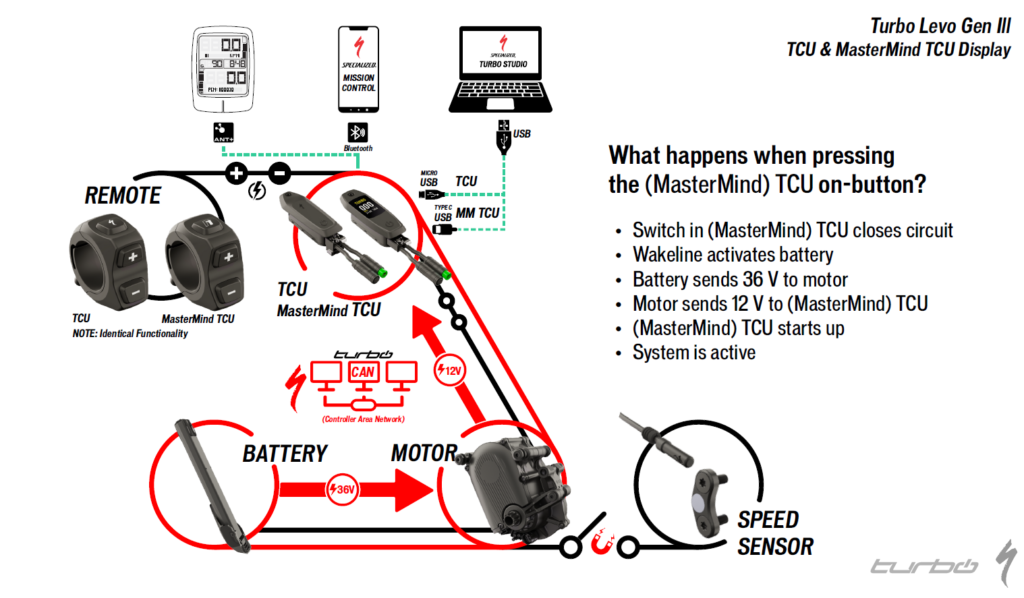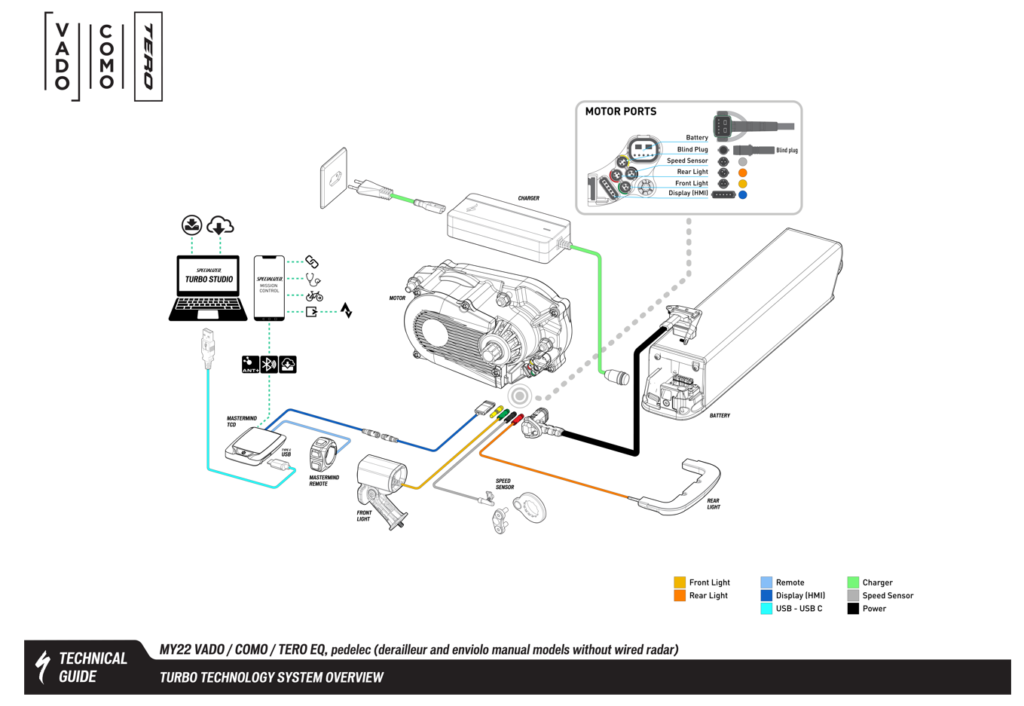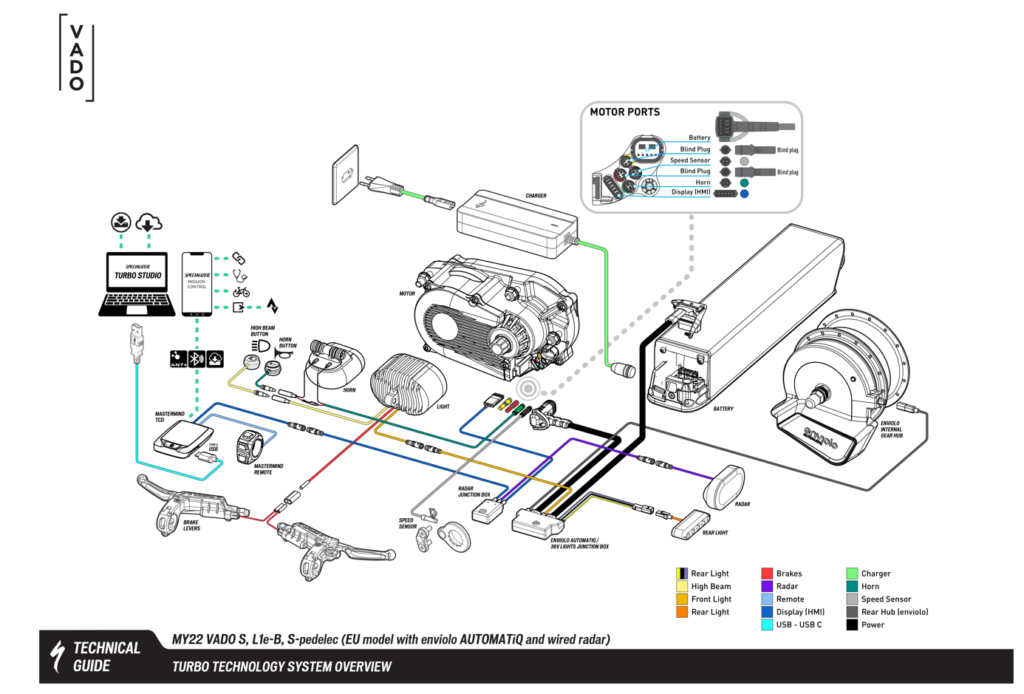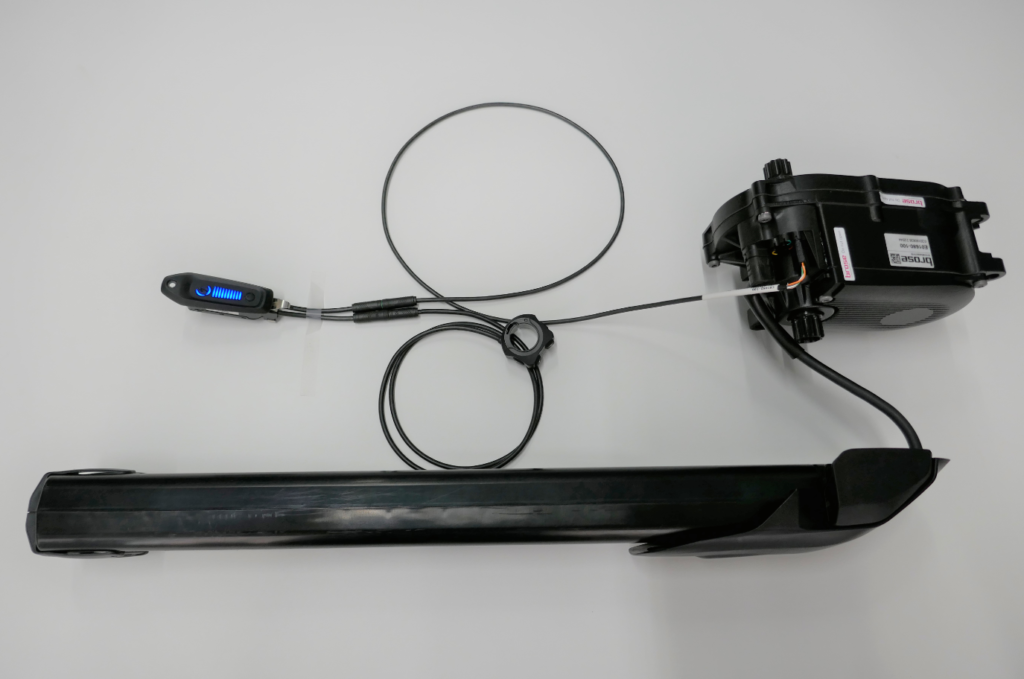COMPLETE SYSTEM
Basic Theories of Operation
Theories of Operation are simplified schematics with electronic diagrams for all Turbo systems and generations.
They illustrate:
- How the electronic Turbo components are connected
- Which components are part of the CAN communication (red)
- What happens when the bike is powered on
- The digital tools the system connects to (Turbo Studio, Mission Control, ANT+)
Understanding these working principles helps to solve issues more effectively, for instance when a Turbo bike does not power on.
As an example, they show what happens when you start the bike. Conversely, if a bike does not start, they help to understand where the problem may be. Components outside this network act like simple switches that give signals.
For initial troubleshooting, always run digital diagnostics through the Event Log in Turbo Studio,
All Theories of Operation can be found in the Turbo Studio `Knowledge Base`.
In red circles: components that are part of the CAN communication (they communicate and exchange messages)
In white circles: components that act as switches only (a remote is not needed for motor support, whereas a speed sensor signal is)

Full System Diagrams
These diagrams show the interplay of all components in their respective system, including the communication to the `outside world`´´ (Mission Control App, ANT+ devices, Turbo Studio).


Desktop Setup
A so called «Desktop Setup» not only shows how the components are connected, it also helps test and diagnose parts.
A desktop setup should be used:
- to identify faulty part
- to test new ones before installation.

Normal System Behaviour
When something falls under `normal system behaviour`, it operates as intended per design and therefore cannot be classified as an issue. One common example for typical normal system behaviour would be motor power reduction at lower charge levels. Besides behaviour patterns that apply to all bikes, there is system-specific or even bike-specific `normal system behaviour`. Therefore, the referenced overview is broken down into different categories.
Understanding and referencing `normal system behaviour` helps you to:
- Distinguish between normal behaviour and issues
- Explain normal behaviour to Riders together with some advice
- Prevent problems for daily use
